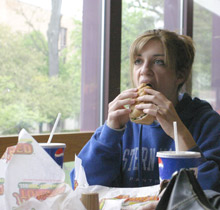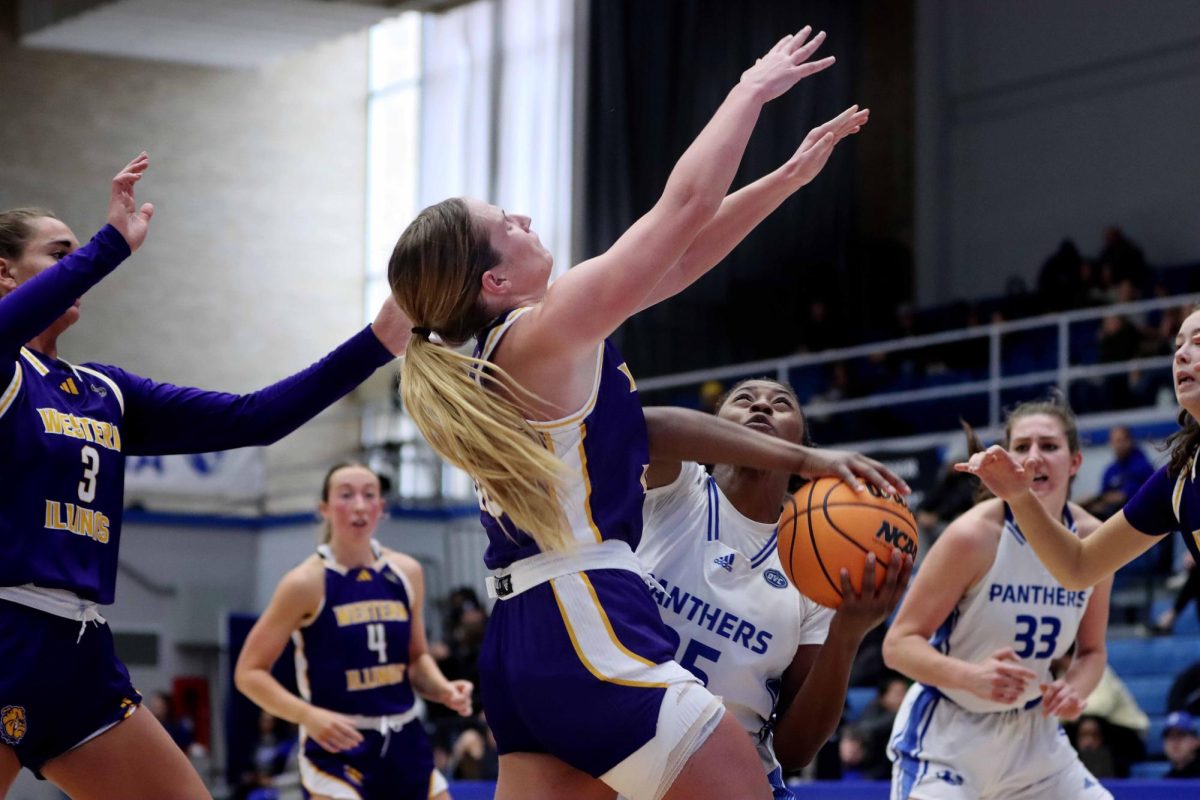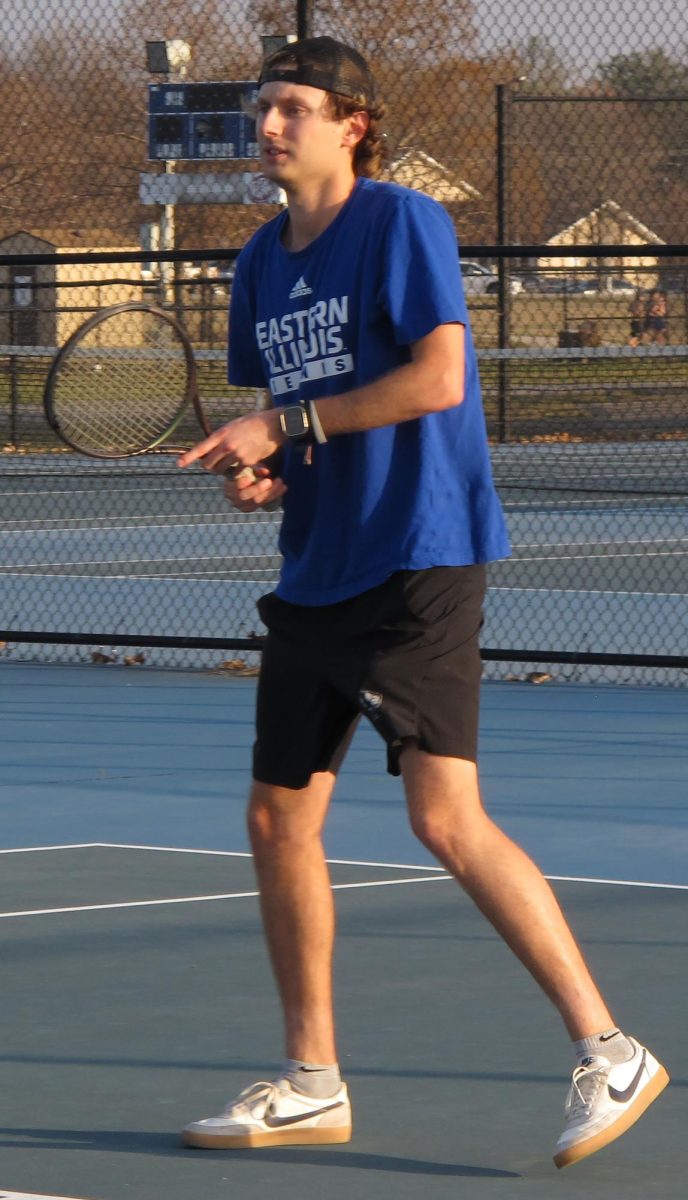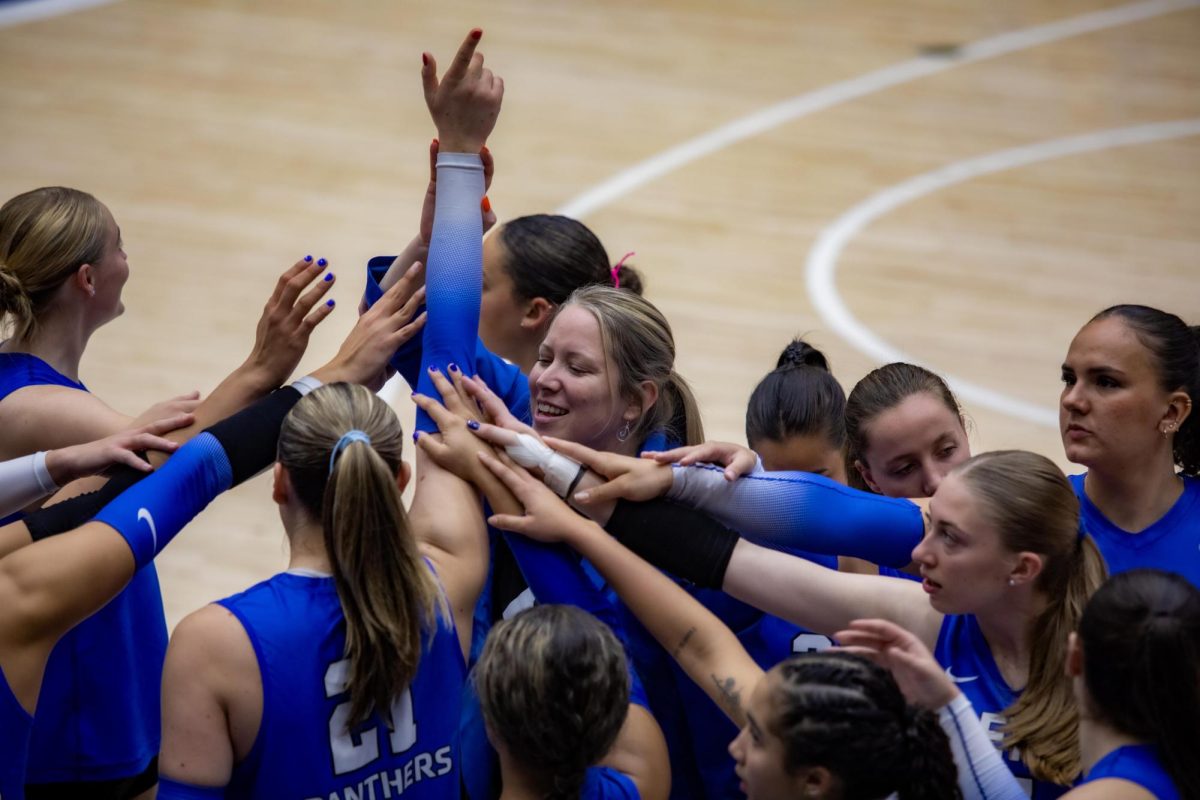Know about nutrition
Some Eastern experts believe common health misconceptions might contribute to why college students are not as healthy as they could be.
Americans in general do not know how to maintain a healthy diet.
Total health requires eating well and exercising, not one or the other.
The 100 or so Eastern students who come to the Health Education Resource Center for dietary assessments and nutritional guidance are among those seeking to educate themselves about how to improve their diets.
Although it would be inaccurate to place Eastern students on a scale of overall health with such a small sample, using their information and national statistics from the American College Health Association, nutritional education coordinator Jennifer Taber can draw conclusions about college students in general.
Those specific Eastern students’ nutritional problems and habits are close to the national norm, she said.
College students, on a national level, consume diets low in fruits, vegetables and whole grains, high in fat and sodium, and moderate to high in alcohol. About 20 percent of students’ caloric intake comes from too much sugar in sweets and soft drinks, Taber said.
These habits are affected by a number of factors, said family and consumer sciences instructor Teresa Drake.
Drake tells her Nutrition Dilemmas and Decisions EIU 4051 class that these include outside influences like friends, the media, and knowledge, or lack thereof, about what their bodies actually need.
One big factor that affects the overweight and obesity epidemic in 50 to 60 percent of Americans is over-nutrition, Taber said, which correlates to college students. The guidelines set by the U.S. government’s food pyramid are to prevent deficiency, which some people do not know, she said. Many Americans have plenty of access to food, and do not need to eat as much as they do.
The old standard food guide pyramid has been changed to a new, online version called MyPyramid (mypyramid.gov), which is more detailed, provides pictures of foods that should be included in a healthy diet and can be personalized to a student’s own nutritional needs.
“It might be a little more helpful because it gives specific amounts – cups or ounces versus servings,” Drake said.
The meaning of “servings” used to be left up to the consumer, she said.
Buffet-style eateries, such as the residence hall dining centers, fast food and similar eateries, such as the Food Court in the Martin Luther King Jr. University Union, serve larger portions than are necessary, Taber said.
Students can choose, however, how much they actually eat. A normal portion size of lean meat is about the size of a deck of cards, according to “Action Guide for Healthy Eating,” a pamphlet from the National Cancer Institute.
In addition, fast food-style eateries serve many foods that are higher in fat because that is what sells, said Jim Painter, chair of the family and consumer sciences.
Hardee’s new Philly Cheesesteak Thickburger is a 1/3-Angus beef patty with 930 calories and 63 grams of fat.
An article by the Associated Press written this year said McDonald’s fries have a total of 8 grams of “artery-clogging trans fat,” and a total of 30 grams in a single portion. The National Cancer Institute’s dietary guidelines for the public recommends that a person consume only 30 percent of their daily calories from fat.
Students who eat in the various dining centers on campus can calculate the amount of calories, carbohydrates, protein and fat they consume by accessing Dining Services’ online nutritional calculator at http://www.eiu.edu/~dining/nutrition_calc.php.
This calculator enables students to enter the quantity of foods they consume during meals and find out their total intake for the day.
Drake said keeping a food log like this could help students recognize patterns in their eating habits in order to fix them.
Information on how to eat well is widely accessible, but students should ensure it comes from credible sources, Drake told her class.
The American College Health Association’s National College Health Assessment ranked college students’ sources of information about health topics in 2005.
Friends came in second, only after the students’ parents. Medical staff and health educators came in sixth and seventh. When ranked by believability, however, health educators and medical staff came in first and second, with parents coming in at third and friends coming in at No. 11.
Accurate information is available at Eastern’s Health Education Resource Center as well as the HERC nutrition Web site (http://www.eiu.edu/~herc/nutrition.php) and various other Web sites such as mypyramid.gov. Websites ending in .gov and .edu are credible, and mostly so are .org sites, Drake said. Consultations with various health education professionals and a variety of pamphlets are also available at the HERC.
Students also have many misconceptions about fitness and can find helpful information from the same credible sources, various Web sites and information forums like bodybuilding.com.
Just as fitness and nutrition are important in achieving overall health, strength training and cardiovascular workouts are each necessary components for overall fitness.
“A lot of it is functional training,” said Scott McNary, a National Academy of Sports Medicine certified personal trainer. “You can’t put your health on the back burner. That’s the only body you’ve got.”
Regular exercise helps prevent chronic diseases such as certain types of cancer and cardiovascular disease.
McNary worked as a personal trainer at the Student Recreation Center before he decided to concentrate on classes. His client base was made of more than 120 students, he said.
He estimated that only about 3 to 4 percent of Eastern’s campus really knows what they’re doing when they’re working out.
McNary would meet with each, have them fill out a questionnaire and assess their fitness levels and needs based on their hobbies, activities and overall lifestyles. Then, they would run through evaluations so he could determine where the person had muscular imbalances that needed work.
He would teach his clients how to properly exercise in their individual routines, and then meet every month to make sure they were changing up their program, he said.
McNary worked with clients of all ages at the SRC, but most were college-aged women looking to lose weight, he said.
“About 80 percent of them (his clients) already worked out . they just didn’t know the proper way to do it.”
When not with a client, McNary said he would only correct people if he was afraid they would hurt themselves. Otherwise, at least they were using their muscles in some way, he said.
Students have access to the Assessment Testing and Prescription lab in the SRC, where they can have their body composition, blood pressure, muscular flexibility, muscular strength and cardiovascular endurance tested and get an exercise prescription.
Part of McNary’s job was to teach students who did not know how to properly do the exercises listed on their prescriptions. Currently, the SRC is waiting to fill the personal trainer position and will hold a training session this summer to certify people who are interested in the program, said Ken Baker, director of the SRC.
Know about nutrition

Sondra Kouinelis, dietitian graduate student, has some Subway for dinner at the MLK student union. (Photo by Jay Grabiec/The Daily Eastern News)





































































